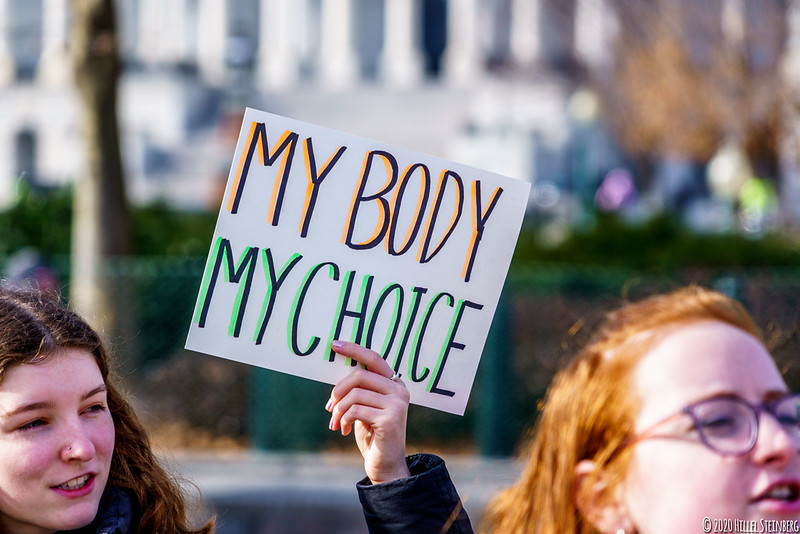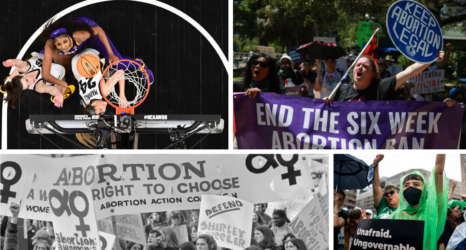Editor’s Note: This piece has been published under an alias, as the author wishes to remain anonymous. This is the first time she has shared her story.
When I realized I needed an abortion, I didn’t realize that it would be a destination abortion. I didn’t realize how many barriers—how many people—would be in my way just so I could get the abortion I wanted, when I wanted it.
But thankfully, with the help of complete strangers, I was able to get the abortion I wanted at 30 weeks.

I had been married for barely a month when I became pregnant. I felt extremely stressed and scared; I didn’t know what to do. I was shocked by how fast I became pregnant and it put a huge stressor on our newly transformed relationship. It was anything but wedded bliss. My loved ones were supportive and said ‘it was destiny’—but to me, destiny or not, it was not going to help our struggling relationship.
Our fights became more constant, and I was stressed all the time. He would scream and yell at me; every conversation devolved into an extreme fight and I worried that I was going to die. He called the pregnancy a sin. My family blamed the mood swings.
I couldn’t take the stress. I started seeing a lot of brown spotting when I went to the bathroom, so I went to the doctor to see what was going on. She asked if I had been stressed and I told her about the fights and that my husband was getting violent with me—she agreed that the stress wasn’t helping my body and sent me on my way.
Barely a week later, more pain set in and I was rushed to the hospital. I was dilating, spotting, and going into labor; the pregnancy was determined to be high-risk and the doctors said the fetus’s chances of survival are low. This was not at all how I imagined my first pregnancy. I wasn’t getting the support that I wanted during the pregnancy, and now everything was going wrong.
I asked the doctor what my options were, and she said that because I was nearing 26 weeks, in New York, I would need to continue the pregnancy and could seek out an adoption if I didn’t want to parent. I asked about abortion, but it felt like they were ignoring my request and continued to tell me what my options were based on the assumption that I would continue the pregnancy.
It’s dehumanizing being a Brown woman in a medical setting where everyone says they know your body better than you do. Finally, a nurse gave me a referral to an abortion clinic, which I visited two days later.
The doctor at Park Med was so nice, but also gave me devastating news: I wasn’t 26 weeks. “You’re 28 weeks today,” he said. “You’re not the first patient I’ve heard this story from at that hospital.”
I felt extremely lost. Was anyone going to help me get the abortion I wanted? Thankfully, the staff at Parkmed connected me to Brigid Alliance which helped me plan my trip to a clinic that could care for me—in Washington, DC.
It took over a week to raise the $9,000 for my abortion. I had $200 saved away and several abortion funds—the DC Abortion Fund, New York Abortion Access Fund and a few others pitched in. Brigid Alliance paid for my bus ticket to Washington, DC, hotel room for the week, and meals. They connected me with a volunteer named Renee who picked me up at the bus station and drove me to and from the clinic each day.
My husband wouldn’t come with me, and I knew if I told my parents they would try to stop me, so I went alone. It was ridiculous that I had to travel to a different state where none of my loved ones could join me because of their own schedules in the first place. I couldn’t believe so many strangers were jumping in to make sure I could get from New York City to D.C. for my abortion, and that one procedure would need so much coordination.
I expected the experience to be cold and isolating. But when I arrived at the DuPont Clinic, I was greeted with love.
“You’re gonna be fine,” Dr. Matthew Reeves said as he smiled at me.
In the waiting room, I flipped through the booklet where other people shared their stories and pre-abortion jitters. I contributed my feelings on two pages.
“When you feel good and you feel ready, I’m going to take you to the next step.” Dr. Reeves.
Finally, someone was listening to me, and what I needed.
The procedure lasted over three days, but it was relaxing. After mentioning that I like the smell of eucalyptus, the nurse sprayed a cotton ball with it, and the scent calmed me down.
I barely spoke to my husband, so I filled the evenings with ramen dinners and takeout with Renee, picking up medications, watching TV in the waiting room and hotel, and a little sightseeing. I had never been to Washington, D.C., before, so I asked to see the White House and Washington Monument and to walk off the laminaria insertion, as recommended by Dr. Reeves.
The irony of being at the White House inhabited by a president who demonizes people who have later abortions, while I was having a later abortion, was a lot to bear. I wanted to walk in and just show him what I was going through.
Could he comprehend what it’s like to go through this with no loved ones by your side? Did he understand what he would be making me go through if I couldn’t get an abortion? No, I assume not. It’s easier for him to demonize us than recognize we’re all making the best decisions we can with the destiny we’re dealt.
I took the bus back home on Friday, the day after the final procedure day. I felt relieved. I was angry. I was stressed. I wasn’t pissed off about what I went through, but that I had to leave my state to get this done. I was angry about my relationship with my husband, and that he didn’t want to come. I felt guilty and questioned if I would ever get pregnant again. I wondered if people would look at me differently.
When I finally told my best friend, she was supportive. “Whatever happened, happened. Scream it out. Cry it out,” she said as I cried on the phone for three hours.
When I went back to work, I had a lot of support from my coworkers. I started going back to the gym; I returned to my life. A few weeks later, I realized how right I was about what I did. But I couldn’t have made it if I didn’t have that help.
Accessing an abortion shouldn’t have to depend on a group of strangers ready to help, but I am glad they were there. I wonder what our society could look like if we all held a bit more empathy and grace for people like me, who have later abortions and no one to support us.
What could it look like if we all show up with a little bit more care? I am not the demonized woman the anti-abortion politicians portray us as to gain a few points in the polls. I am simply a woman who needed an abortion. I deserved to be listened to.
The coronavirus pandemic and the response by federal, state and local authorities is fast-moving. During this time, Ms. is keeping a focus on aspects of the crisis—especially as it impacts women and their families—often not reported by mainstream media. If you found this article helpful, please consider supporting our independent reporting and truth-telling for as little as $5 per month.





